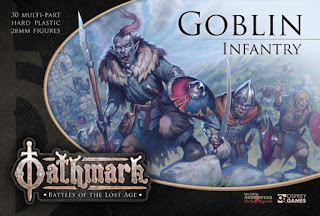Before I introduce our family Oathmark armies, let’s get a closer look into the races of the game.
As mentioned before, there are 4 from them (at least until the release of Oathbreakers): dwarf, human, elf and greenskins (orcs and goblins, mostly treated as one race). Every race has his own characteristics:
- Dwarves have the best defense values in the game, they are the second most disciplined (so activation and moral tests shouldn’t be a big issue for them), but are the second most expensive, the slowest (every other races shares the same speed), and the only race, which has no cavalry units (and therefor no mounts for the characters). Another important, but not so obvious thing, that they (somehow, maybe because of lack of the mounted characters) have the cheapest wizards (even cheaper then their goblin colleagues)! Their magic is mostly built on defensive spells, and are relatively easy to cast. They don’t really have any special troops (militia is basically cheap infantry, and ranger style troops has everybody except the greenskins), I really miss a very tough, heavily armored infantry here… And berzerkers! (Maybe in a following supplement? Or something home brew?) Therefor the preferred play style for them is fortify a place on the table, shoot and cast as long as the enemy doesn’t come closer, and then crumble them in hand to hand combat with the tough infantry. Not the most dynamic but a pretty easy to follow tactics.
- Elves have the best attack values, the best discipline, but they are the most expensive ones too (an elf costs as much as two goblins). Besides that general points, they have the best archers (they don’t have to shoot at the closest enemy, as everybody else, and they range is also a bit higher), more units, who can move easily over rough terrain, light (and pretty fragile) mounted archers and a very good armored cavalry, the most expensive normal unit (so no character, artillery or monster) in the game. There is also an interesting, highly mobile war dog unit. (But how can war dogs be stronger then the horse sized giant wolves? Maybe magic?) But they lack of the usual, indirect firing warmachines of the other races. Their spells are the hardest ones to cast, but if they succeed, they can help a lot. If the enemy has no strong spellcasters, or artillery, the elven army has mostly only to wait for the enemy to come in range of their devastating arrows. But because of they high attack values, they are also pretty good at assaulting the enemy. But then you have to be careful at the flanks, because a charge on the side or in the back is deadly, and every enemy will have more troops, more units, therefor more opportunity to outmaneuver the elves.
- Orcs and goblins are two races, with different properties, but they are more or less one faction in the game. Goblins are the cheapest troopers, they have charge bonus, but they have the weakest attack and activation in the game. They have very cheap slave units to tie up enemy troops, and they have very cheap (equals an elven infantryman) light cavalry, an even cheaper giant wolf pack, and the most armored missile cavalry. Orcs have very similar attributes as humans (next point), with worst activation, but bonus on a charge. Goblins have no heavy troopers, orcs have no cavalry, so they can (and has to) complete each other. They are good in offensive magic, and have some spells, that can equal the activation disadvantage. And don’t forget a small thing: orc spellcasters are the only ones, who have armor values like their soldiers. The tactics here is attack, assault, charge with everything, and overwhelm the enemy with numbers. Slaves can shield the more valuable troops, light cavalry can threaten the flanks, and harass the enemy troops. But careful! You can never be sure, that you can make your planned moves, and spreading panic on the battlefield can be tragic because of the low activation.
- Humans are the last race (yet), and after the characterization of the other races, there is not much to say… They are the average in every aspect (as expected). The only thing where they really stand out, is the cavalry. They have light missile cavalry (without armor, so they are really vulnerable, must avoid close combat), “normal” cavalry, and devastating heavy cavalry with the hardest armor (not counting the monsters) of the game. So their tactical options are the widest, but because of their average values, they must adapt. The human magic supports that pretty well by increasing the own, and decreasing the enemies mobility, strengthen the initiative (very good for the cavalry). And another tactical advice: stomp the enemy in the ground with cavalry charges!
Don’t forget the characters and the war machines. Every race has them, they can be leaders (support activation), champions (elite fighters), a mix of the previous two, and spellcasters. Every character has the properties of their race, for example dwarven characters has a high defense value. Artillery is a hard hitting, long ranged, indirect firing (no need for line of sight) unit type, who is more effective against large units (caution goblins!), but need protection against every form of attack (close combat, missile attack and attack spells are all very dangerous). Elves are the only race without the usual catapults, but they have a ballista instead.
Oh yes, there is common magic as well… And the monsters! Every race has monsters (there are even neutral ones), but they are worth an own post (maybe even more)!






No comments:
Post a Comment